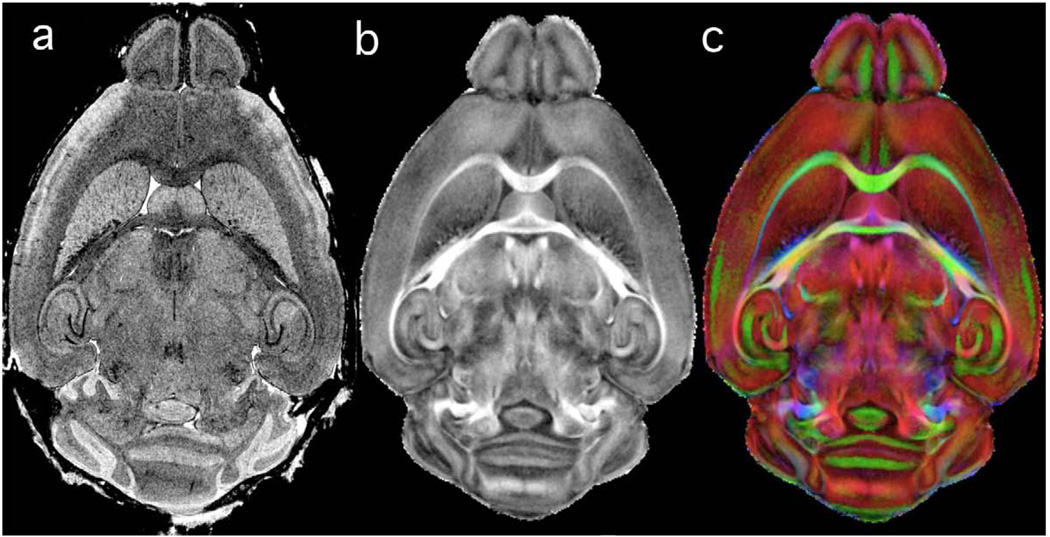Figure 7.
As new types of MR data become available, they can be efficiently mapped into WHS through the use of an alignment protocol, i.e. a dataset acquired with either LoResT1 or LoResT2* (Table 1). The T2*-weighted image in (a) was acquired prior to the acquisition of the multiple scans required for calculating diffusion tensor imaging (DTI)—see (Jiang and Johnson, 2010). The DTI data in (Jiang and Johnson, 2010) was aligned to WHS, thus expanding the space with the inclusion of (b) fractional anisotropy and color-coded eigenvalues. The low-resolution gradient-recalled echo (GRE) protocol (LoResT2* - Table 1) can be acquired in < 1 hour.

